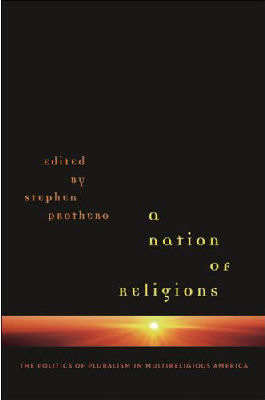
|
Posted November 20, 2006
Book: A Nation of Religions: The Politics of Pluralism in Multireligious America Edited by Stephen Prothero The University of North Carolina Press. Chapel Hill. 2006. Pp. 296 An Excerpt from the Jacket:
For a generation, scholars have been documenting how the landmark legislation that loosened immigration restriction in 1965 catalyzed the development of the United States as “a nation of Buddhists, Confucianists, and Taoists, as well as Christians,” as Supreme Court Justice Tom Clark put it. The contributors to this volume take U.S. religious diversity not as a proposition to be proved but as the truism it has become. Essays address how religious diversity is changing the public values, rites, and institutions of the nation and how those values, rites, and institutions are affecting religions centuries old yet relatively new in America. This conversation makes an important contribution to the intensifying public debate about the appropriate role of religion in American politics and society. An Excerpt from the Book: American Muslims’ attitudes toward the United States and participation in American society are key factors in determining their future. In the aftermath of the 9/11 terrorist attacks, the relationship between the American Muslim community and American society has taken on even greater importance. What path will that community take as it seeks its place in a culture that differs dramatically from Islamic cultures? Will Muslims seek isolation or involvement, accommodation or resistance? Peter Berger has argued that religion historically has served as an effective tool for legitimizing the institutions of a society by bequeathing to them a sacred purpose. Immigrant religious groups such as Catholics and Jews have struggled for acceptance in the American mainstream and in so doing came to adopt America’s patriotic myths, thereby stretching their sacred canopy over the United States and its political canopy over themselves. Involvement, therefore, leads to accommodation, and isolation leads to resistance and fanaticism. Table of Contents: Part 1. Muslims 1. Isolate, insulate, assimilate 2. Progressive Islam in America Part 2: Buddhists 3. From Pearl Habor to 9/11 4. Reproducing Vietnam in America 5. Tibetan Buddhism in America Part 3: Hindus and Sikhs 6. Mr. President, why do you exclude us from your prayers? 7. Sacred land 8. Making home abroad Part 4: Church, Mosque, Temple and State 9. From alleged Buddhists to unreasonable Hindus 10. Agonistic federalism Part 5: Conclusions 11. The De-Europeanization of American Christianity 12. Religious pluralism and civil society |
|
